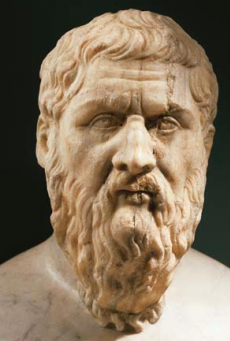
Email: lienaaltai@icloud.com
Total Article : 47
About Me:Sixth form student with an interest in a wide variety of topics such as languages, history, philosophy, politics and literature

Dualism and Monism encapsulate the idea that body and soul are either separate, or one. The concept of the soul and body has been popular from the earliest organised religions such as Hinduism to modern theologians such as John Hick. The discussion of the soul’s relation to the physical body has also been popular within ancient Greek philosophers, the Dualist beliefs of Plato contrasting those of the monist Aristotle, who believed that the soul and body are inseparable.
An early example of dualist thought can be seen in Plato’s philosophy. Plato suggests that the soul and body are separate. He goes further to say that the soul is effectively “imprisoned” in the body, the soul being “set free” when the body dies and the soul goes to the land of the forms. He described the body as “the source of endless trouble to us”, using the analogy of a chariot driver (the soul) trying to control two horses (mind and body) which pull in different directions. In “phaedo”, Plato suggests the soul’s immortality. The immortality of the soul is important to a dualist belief as an immortal soul must be able to exist separately from a mortal body. Through Plato’s theory of the soul, he goes further than separating soul from body in painting the body as a prison and inconvenience to the soul – yet his claim rests on his belief in the world of forms being a home for the souls.
Dualism is also associated with Descartes, who stated that the mind is a non-physical and non- spatial substance, a thesis known as “mind body dualism”. Descartes was very influenced by Plato, and his use of “mind” can be used interchangeably with soul. He held the reductionist view that without souls, humans were essentially robotic entities. This view can be compared to that of Plato who also made the soul the most important part and made the body simply an inconvenience. Descartes’ research on the Pineal Gland backed up his statements with science, as he described this part of the brain as “the seat for the soul”. However, as criticised by Locke, this did not have much basis in fact as the soul remained an unproven concept. Both Plato and Descartes however begin to piece together an important separation of the physical body and the spiritual soul.
Aristotle did not hold this Dualist belief. His uses of the Greek word “psyche” lead his belief to not correspond with that of a soul that lives on after death. Aristotle believed the soul is not only the principle of life in the body, but gives the body form. By form, Aristotle was saying that the soul is not a substance like matter, but is what defines us as what we are. The example of a statue can describe the relationship between us and our soul. The form of a statue is not a physical thing in itself yet exists and is inseparable from the physical statue, just like our souls and our physical body. Aristotle gave the example of a stamp in wax to describe the inseparability of our souls to our body, the form of the stamp being inseparable from the wax. Due to this oneness of soul and body, Aristotle believed nutrition, perception, desire, locomotion and intellect were all faculties of the soul. This contrasts Plato’s belief that faculties such as desire or nutrition were bodily functions that were a distraction from the soul’s yearning for the world of forms.

0 Comment:
Be the first one to comment on this article.